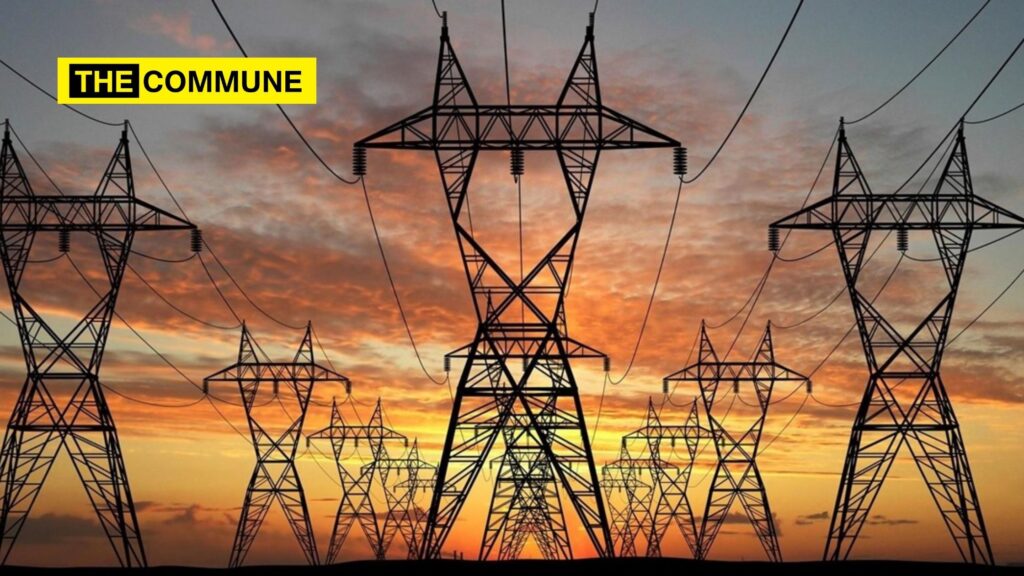Most Indians diligently pay their electricity bills on time, yet state governments owe staggering sums to power distribution companies (discoms), which are drowning in debt. According to a recent report, Indian states and union territories (UTs) collectively owe over ₹1 trillion to power generation companies (gencos) and ₹1.3 trillion to discoms. In states like Tamil Nadu, discoms are heavily indebted, owing several thousand crores to power generation companies. A 2022 report states that Tamil Nadu discoms have the highest outstanding dues of ₹22,756 crore to gencos.
What’s the reason for this predicament?
The root cause lies in how political parties like the DMK and ADMK have made electricity into a political product. While industries bear the burden of higher power costs, free electricity for farmers and households up to a few hundred units are often included in poll promises.
This severely strains the financial health of state power distribution companies, burdening the exchequer with massive deficits and ultimately leading to poor electricity services.
The Tamil Nadu government’s decision to hike electricity tariffs by over 4% which has resulted in a lot of criticism from all quarters of society, should be seen in this light. To add to this, the policy of the government to bill consumers on a bi-monthly basis will cause a huge burden on the pockets of the middle class and small and medium-sized industries.
The impact is evident in regions like Coimbatore and Tiruppur, where power looms and small industries are shutting down due to exorbitant power bills and frequent outages.
The government has hiked the electricity prices to address budget deficits, but the repercussions of this measure can be multifaceted and far-reaching, often negatively impacting the economy in several significant ways. Here is how this move will affect the economy.
Increased Production Costs and Inflation
The immediate consequence of rising electricity tariffs is a surge in production costs across various sectors, including manufacturing, processing, and services. These increased operational expenses often lead businesses to raise prices for goods and services, triggering cost-push inflation. As a result, consumers face higher prices for essentials like food, clothing, and transportation, which reduces their purchasing power and leaves them with less disposable income for non-essential expenditures.
Strain on Consumers and MSMEs
The ripple effect of higher electricity costs extends to households, where increased utility bills reduce disposable income. Consumers are forced to tighten their belts, cutting back on discretionary spending and thereby reducing aggregate demand. This drop in consumer spending can lead to slower economic activity and potentially dampen business profitability.
Small and medium-sized enterprises (SMEs), which generally operate on narrower profit margins, are particularly vulnerable to cost increases. Unlike larger corporations, SMEs may struggle to absorb higher energy costs, risking closures or layoffs. This not only impacts individual businesses but also the broader job market and local economies reliant on these enterprises.
Investment Deterrence
The increased cost of electricity can deter investment, especially in energy-intensive industries. With higher operational costs, investors may shy away from regions with steep energy prices, stalling economic growth and job creation. The relocation of businesses to areas with more favorable energy costs could further exacerbate regional economic disparities.
Supply Chain Strain
The ripple effect of higher electricity costs extends through the supply chain. Suppliers and distributors experience elevated costs for logistics and raw materials, which further exacerbates price increases. This strain on the supply chain can lead to a cycle of rising costs and diminished economic activity.
Regional Disparities and Social Inequality
The impact of increased tariffs is not uniform across regions. Rural or less developed areas, which often face higher energy costs due to lower infrastructure investment, can experience more severe economic strain compared to urban centers. This disparity can exacerbate regional inequalities, as poorer areas struggle more to cope with the rising costs.
Furthermore, higher electricity tariffs disproportionately affect low-income households, who spend a larger share of their income on utilities. Without targeted support measures or subsidies, these households could face increased poverty and social inequality.
Whether the state government will push for a move towards solar energy or roll back the price hikes or at least implement the monthly billing system is something that we must wait and watch. But given the history of the DMK government, especially over the past 3 years, none of this might happen. The burden is solely for the common man to bear while the governments cry hoarse and spread fake news about the central government’s policies that have “led” to the policy decision of the Tamil Nadu state government.
It is crucial for people to understand that what appears as a free benefit today will eventually cost much more in the long run.
Subscribe to our channels on Telegram, WhatsApp, and Instagram and get the best stories of the day delivered to you personally.

